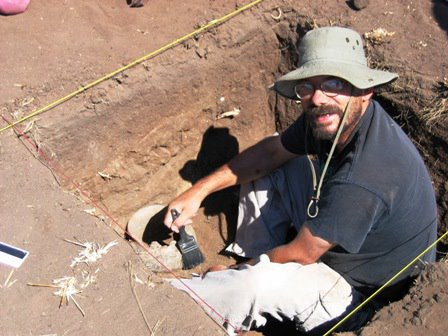Dispatches From the Culture Wars posted today on excerpts from an article by George Sim Johnston appearing in the Catholic magazine Crisis. Johnston authored a book on evolution in 1998, entitled Did Darwin Get It Right? Catholics and the Theory of Evolution, which I had the pleasure (or should I say, displeasure) of reading. Johnston appears to be assuming the lead as an authority on evolution to whom all good Catholics can turn if they have questions. The sad fact is that Johnston knows less about the specifics of evolutionary theory than I knew as a fourth grader at St. Thomas More Catholic School in Paradise, California (during a time when Catholics were truly interested in science education). Johnston's errors are legion, but the majority can be summarized as follows: he falsely defines aspects of evolutionary theory to create straw men that are easily knocked aside; he engages in serious "quote mining" to lift statements from professional scientists for purposes of leading his audience to conclusions never intended by the original authors; he relies on "authoritative" authors whose opinions have been refuted time and again; and his lack of knowledge regarding the fossil record would fill volumes, yet he confidently claims that no transitional fossils exist. Finally, his current Crisis article is nothing more than recycled passages from his 1998 book. Apparently for Johnston, nothing of scientific interest in evolutionary biology has happened since 1998. Even his anecdotes are re-hashed.
One recycled argument of Johnston's particularly struck me. In Did Darwin Get It Right? Johnston writes the following (p. 35):
"There is no fossil grandparent of the monkeys, for example. "Modern gorillas, orangutans, and chimpanzees spring out of nowhere," writes paleontologist Donald Johanson, discoverer of "Lucy." "They are here today; they have no yesterday."
In the current Crisis article he writes:
Bats, orangutans, bees, turtles all appear out of nowwhere and remain pretty much what we see today. There are no transitional forms to speak of.
Funny Johnston should rely on orangutans as an example of a species supposedly arising, fully developed, out of nowhere. More laughable is the fact that he somehow thinks the paleontological situation hasn't changed since 1998 (or more likely he hasn't bothered to look into it). Forget the fact that he takes Johanson out of context (read the entire passage from Lucy and you'll find Don does indeed think there is a "yesterday" for orangutans); forget even that in 1998 Johnston fails to mention Proconsul, Pliopithecus, Ramapithecus, Sivapithecus, Propliopithecus, Afropithecus, Dendropithecus, Limnopithecus and God knows how many other species, genera and families of potential hominoid ancestors were available; all of which showed so many transitional features between them that it is indeed, difficult to confidently construct phylogenetic trees. And as of today? Consider other hominoid fossils that may or may not show affinities specifically with the orangutan, such as Heliopithecus, Turkanapithecus, Kenyapithecus, and Ouranopithecus. Or how about the recently discovered fossils from Asia, such as Khoratpithecus and Lufengpithecus, both clearly showing orangutan characteristics?And what of Pierolapithecus? Johnston is clearly cherry-picking the information he wants to convey to his readers.
Finally, Johnston uses the most inane analogy to discuss the evolutionary concept of natural selection I have ever heard:
Natural selection simply eliminates what doesn't work. That's all it can do. But the destruction of the unfit does not explain the origin of the fit. As biologist Hans Driesch pointed out long ago, to say that natural selection "creates" anything is a bit like answering the question, "Why are there leaves on the tree?" with, "Because the gardener didn't prune them away." Or, as Arnold Lunn put it, it's like calling the Nazi air strikes creative because they left standing Westminster Abbey.
Brayton slays this idiocy with his usual flair:
This is just a ridiculous statement. Talk about horrible analogies. If the leaves on a tree could vary genetically and reproduce, as whole organisms do, then by "pruning away" less fit variations and keeping more fit ones, natural selection would indeed guide the creation of something new. If the buildings left standing by Nazi air strikes reproduced and turned into new buildings, and there was a reason why certain buildings were selected and allowed to reproduce, then natural selection would indeed guide the development of new types of buildings from old types of buildings. But neither leaves (as opposed to trees) nor buildings can reproduce, nor do they compete for resources. This is just a weak argument from very bad analogies.
Johston has ignored the bulk of information on evolutionary theory, taken a significant portion out of context, and largely mislead everyone about the rest. So let me provide a better analogy: If Johnston approached a history of Jesus Christ with the same intellectual integrity he has applied to evolution, he would ignore the four gospels and the majority of Apostolic letters. So, did Johnston Get It Right? Not even close. And Catholics serious about learning evolutionary theory would do well to give his book and articles a wide berth.
Thursday, April 06, 2006
Subscribe to:
Post Comments (Atom)




No comments:
Post a Comment